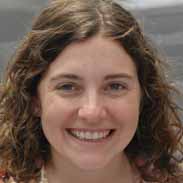Biology Chapter 14 Section 2 Study Guide – Flashcards
Unlock all answers in this set
Unlock answersquestion
The two earliest hypotheses about origin of life?
answer
1) Spontaneous Generation; 2) Theory of Biogenesis
question
Redi's experiment and how it was against spontaneous generation.
answer
Redi observed that maggots, the larvae of flies, appeared only in the flasks that were open to flies. He hypothesized that flies - not meat - produced other flies.
question
Biogenesis
answer
Theory that living things come only from other living things
question
Spontaneous generation
answer
Idea that living things come from non-living things
question
The steps in which life originated according to modern ideas.
answer
"Primordial soup hypothesis" 1) Formation of organic compounds 2) Formation of proteins 3) Genetic code 4) Foundation of membrane 5) Cellular evolution
question
Pasteur's experiment on biogenesis.
answer
Biogenesis was true even for microorganisms. A) The swan-necked flasks remained sterile as long as they stayed upright B) When the flasks were tilted, microorganisms could enter the broth C) The microorganisms grew in the broth, turning it cloudy. This showed that microorganisms do not appear spontaneously
question
Explain the experiment performed by Miller and Urey to explain the formation of organic molecules in early Earth.
answer
Atmosphere of early life - methane, ammonia, hydrogen (Draw picture)
question
What base was needed by a amino acids to form proteins?
answer
Clay
question
What were the first cells like?
answer
prokaryotes
question
Where did the first cells live on our planet?
answer
Rocks
question
The closest relative to the first cells still living on our planet.
answer
Archaea
question
The first cells that produced oxygen were called?
answer
Cynobacteria
question
What happened to the first oxygen that was produced?
answer
Formed iron oxide, then later collected in the atmosphere
question
Two conditions that gave way for the formation of eukaryotic cells.
answer
1)The relationship between cells became mutually beneficial; 2) The prokaryotic symbiots became organelles
question
Explain the endosymbiont theory.
answer
Mitochondria and Chloroplasts were formerly small prokaryotes and they became organelles in eukaryotic cells



